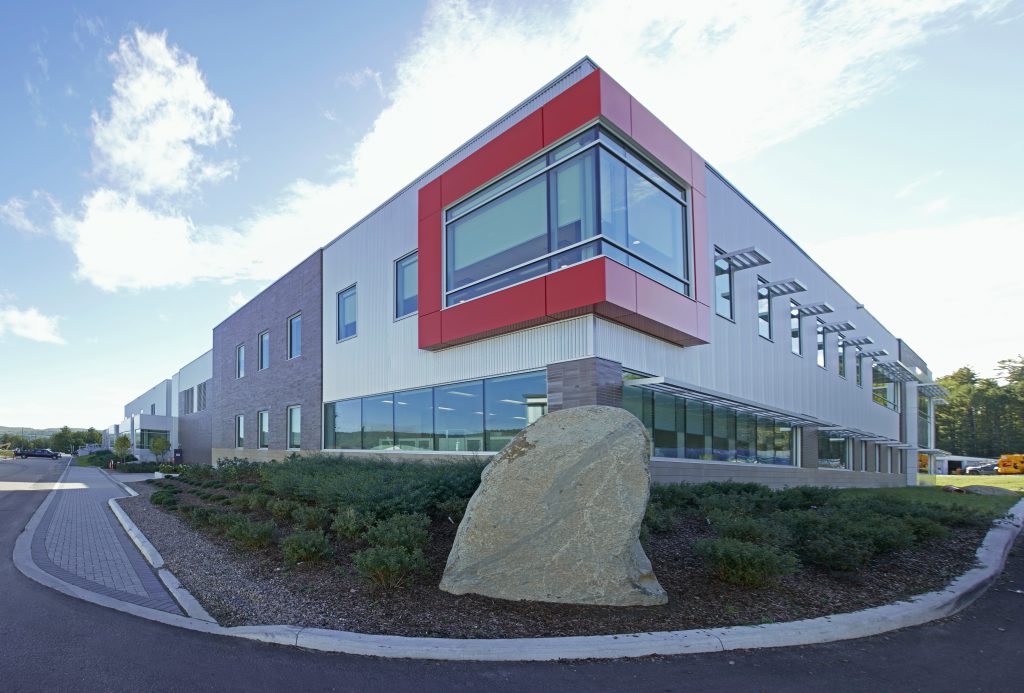

The Harriet Brooks Building in Chalk River, ON.
The Canadian Nuclear Laboratories’ (CNL) Harriet Brooks Building joins a handful of laboratories across Canada to earn LEED Silver certification.
Incorporating a slew of energy-efficient features, the 137,000 square foot material sciences facility is the latest project by CNL to bolster sustainability on its Chalk River, ON campus.
“It is important to our organization, to our staff and to our many stakeholders that we are delivering our work in a manner which places a high priority on environmental stewardship,” said Mark Lesinski, CNL president and CEO.
Harriet Brooks Building achieved a 20 per cent reduction in energy consumption compared to a similar, standard-design building, according to CNL, as a result of its green construction.
Outside, white pavement and a white roof aim to reduce the heat island effect, while exterior lights are designed to prevent “uplighting.”
Efforts to reduce water consumption include the installation of low-flow fixtures and drought tolerant landscaping. Rainwater is captured for use in the building’s bathrooms.
CNL also opted for zero use of non-toxic, non-flammable refrigerants in the building’s HVAC systems.
For the building’s maintenance, areas for storage and collection of recyclables were constructed, and a controllable lighting system installed, including occupancy sensors.
The redevelopment of Chalk River campus will see the construction of three new conventional buildings that will incorporate sustainable building materials.
A $250 million project is also underway to construct the Advanced Nuclear Materials Research Centre (ANMRC). The facility will consolidate capabilities from aging structures on the Chalk River campus scheduled for decommissioning. A joint venture comprising Bird Construction, Sullivan Construction and Chandos Construction Ltd. will construct ANMRC.
CNL has also constructed a groundwater management system to manage rainfall runoff into the Ottawa River, and the organization reduced emissions by more than 30 per cent since transitioning the campus’ heating to natural gas in 2018.
“CNL has set sustainability objectives and targets for energy efficiency, clean energy utilization, waste management and conservation of resources to support continual improvement of our performance, and ensure we are respecting the natural environment we are so grateful to enjoy here in Chalk River,” Lesinski said.
LEED certification provides independent, third party verification that a building was designed and built to achieve high performance in location and transportation, sustainable site development, water savings, energy efficiency, materials selection and indoor environmental quality.
It includes a set of rating systems for the design, construction, operation, and maintenance of buildings, homes and neighbourhoods. www.cnl.ca




